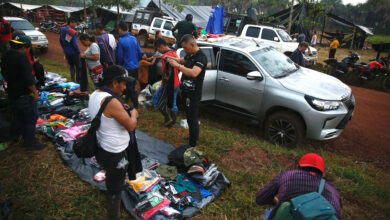Brazil: “Chain of coincidences” led to Jan. 8

Brasilia, Jan 27 (EFE).- The Jan. 8 attack on the seats of Brazil’s congress, supreme court and presidency by thousands of supporters of former President Jair Bolsonaro resulted from a “chain of coincidences” that included major security lapses, the deputy justice minister said Friday.
Ricardo Cappelli, who has been in charge of security in the capital since the day of the disturbances, told a press conference in Brasilia that while “conspiracy” likely played a role in the events, “it is not easy to prove.”
The violence took place a week after Luiz Inacio Lula da Silva succeeded Bolsonaro, who left for the United States two days before the inauguration.
Bolsonaro, a right-wing army reservist and outspoken admirer of Brazil’s 1964-1985 military regime, has yet to acknowledge his election defeat.
In his report, Cappelli is very critical of Anderson Torres, who served as justice minister under Bolsonaro and was appointed public safety secretary in the Federal District of Brasilia in the waning days of the previous administration.
Torres accompanied Bolsonaro to the US, but returned to Brazil after the Supreme Court issued a warrant for his arrest and he remains in custody.
As public safety chief, Torres “generated instability” by dismissing several police commanders and allowing others to take leave despite concerns about possible unrest, Cappelli said.
He added that on Jan. 6, Torres was informed about “a concrete threat” to the institutions of government of Brasilia, but took no steps to address the danger.
The normal complement of police in central Brasilia under routine circumstances is 555, yet videos indicate that fewer than 150 officers were on duty on Jan. 8, Cappelli said.
And instead of two rows of fencing, the usual protocol for protests, only a single row was erected and the task of monitoring the perimeter was assigned to cadets from the police academy.
The rioters engaged in “organized, professional action,” Cappelli said, pointing to their use of two-way radios and the coordination involved in tearing down the security fences.
Videos from Jan. 8 show some police fraternizing with the rioters and those officers will face an investigation, he said.
Cappelli pointed to an “escalation” of anti-democratic attacks beginning Oct. 30, the day former two-term head of state Lula defeated Bolsonaro at the polls, and culminating on Jan. 8.
Bolsonaristas rioted in major cities in December and police thwarted a plot to detonate a fuel truck at Brasilia’s airport.
Cappelli’s report asserts that planning for the attacks took place among Bolsonaro supporters who set up camp outside army headquarters in Brasilia following the election to lobby for military intervention to keep the rightist in power.
By the weekend of Jan. 8, according to Cappelli, roughly 4,000 people were at the encampment.
Nearly 1,800 people have been arrested in connection with what Lula calls an attempted coup, though roughly half are free on bail, and the Supreme Court is investigating Bolsonaro – who remains in the US – for possible involvement in the disturbances. EFE mp/dr





